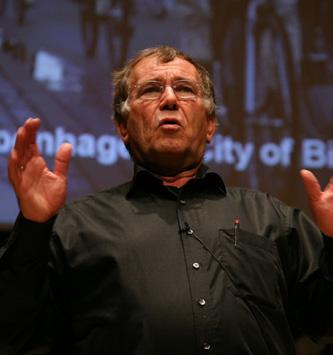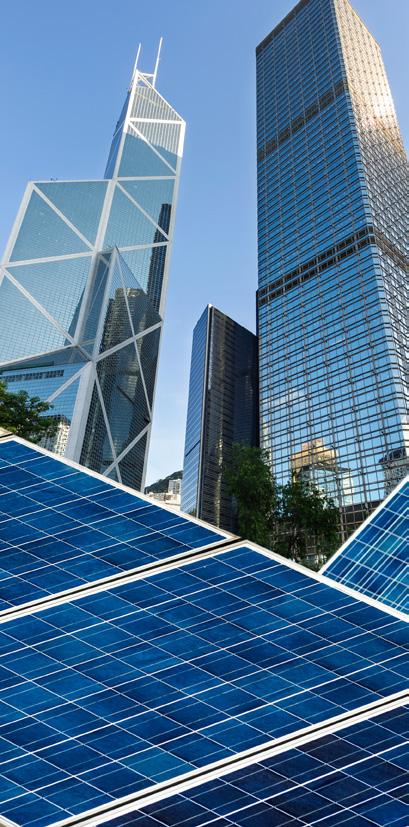
8 minute read
HOW WILL COVID-19 CHANGE THE URBAN LANDSCAPE
Jan Gehl, recently gave a fascinating podcast interview in which he noted that architecture would accommodate COVID-19 in the same way the world did in the 1950s after the massive wave of tuberculosis struck. Some of the colliding tensions will include introvert vs extrovert living and building good places to live vs places that sell quickly. Greater importance will also be given to green space in public areas.
JAN GEHL, GEHL ARCHITECTS

Jan Gehl
Italian architect, Tommaso Giunchi hit the nail on the head when he said that many of his clients “would never again live in a house without at least a small outdoor space.” The words are simple yet powerful, for they highlight the 180º turn that life took literally days after the COVID-19 virus began wreaking havoc in our respective countries.
Long after the virus emits its last weakened spores, the effect on our psyche, our social interactions, and the spaces we call home will live on. Never again, many feel, will they allow themselves to be cooped up in spaces that lack warmth and greenery.
Never again will many take for granted the human connection and celebration of outdoor life that exist when a city is well designed. Architecture will undergo a major paradigm shift that will respond to unequivocal, direct, overwhelming demands throughout the world. After all, there isn’t a single spot on the globe that COVID-19 hasn’t touched (well, maybe the Poles).

CITIES WILL BE GREENER
A recent study published in The Lancet found that there is another pandemic that has the potential to take more lives in the long-term than any virus: sedentarism – a habit that kills five million people across the globe every year. The research found that people who live in green areas enjoy greater wellbeing and have a longer lifespan.
The researchers stated, “The design of urban environments has the potential to contribute substantially to physical activity. The similarity of findings across cities suggests the promise of engaging urban planning, transportation, and parks sectors in efforts to reduce the health burden of the global physical inactivity pandemic.”

BUILDING A BETTER QUALITY OF LIFE
Jan Gehl notes that
This arguably made more sense, he says, when fuel was cheap but now that it has become scarcer and more expensive, it makes little sense to make 'cheap gasoline' the chief driver of urban planning and architecture. Instead, the focal point of design should be public life; a deliberate effort to make cities more liveable, appealing, and diverse.

COPENHAGEN: A METROPOLIS FOR THE PEOPLE

On his website, Gehl mentions surprisingly appealing, even to Copenhagen’s 2009 mission the introverts among us who called A Metropolis for People love escaping to our homes. – inspired by the ideas he Today, being able to go for a espouses.
The government walk in a beautiful green area sought to achieve three main to recharge batteries and enjoy aims: to get people to walk conversation with colleagues more, spend more time in public and friends during break time spaces, and escape from their sounds appealing and necessary ‘private cocoons’. All this sounds for our healing.

PUBLIC LIFE STUDIES
In Brighton, one public life study showed that the number of pedestrians rose by 62% after a street was converted into a pedestrianpriority zone. To make meaningful change after COVID-19, architects will need to map, trace, track, and photograph daily activities.
They will have to take test walks to look for problems in movement and find potentials for change. A myriad of investigations will be necessary if architects and planners are to understand how needs, psyches, and human interactions have changed after the pandemic. It may be in the best interest of urban planners, for instance, to design cities that aid in the maintenance of social distancing.
However, once the pandemic is under control, the need for connection – or at least for public space we can enjoy in proximity to others – may intensify. The future is uncertain and decisions cannot be made without profound study into the best interests of society.

MORE SUSTAINABLE LIVING
Gehl and other architects believe that the desire for more sustainable movement through cities will continue more intensely in the post-COVID world. Thus, smart cities will incorporate more bike lanes. There is also likely to be a downtrend in cruising and flying, and architecture will have to respond for a higher demand in local and national tourism.
Store architecture and design will also need to change. The health scare has seen a significant paradigm shift in the way people shop, with more becoming accustomed to online transactions. Stores will need to be lively, and inviting and appealing storefront design can help owners achieve this aim.

OBSERVATION AND ANALYSIS ARE KEY
To design cities, buildings, and leisure areas that are truly ‘for the people’, says Gehl, architects need to observe, measure the time people spend getting from one point to another on foot, analyse where they stop and for how long, etc.
Everything from building height to how much time a specific spot in the city is sunny, will determine the extent to which people enjoy public spaces. It is laborious work, since many needs have to be reconciled – including those of pedestrians and drivers, which can and often do clash.
ARCHITECTURE MUST RESPOND TO MEDICAL NEEDS

The Los Angeles Times’ Sam Lubell notes that the pandemic has brought about the need for a new type of architecture capable of responding quickly to pandemic-level needs. The commencement of the crisis saw constructors in Wuhan work at lightning speed (14 days) to build two facilities containing a total of 2,600 beds.
New York relied on FEMA’s National Mobile Disaster hospital (a series of modular structures and tents), which was set up in less than half a week. Modular construction is both fast and customisable.
It enables hospitals to create smaller or larger areas as needs arise and best of all, structures can be adapted to completely different uses once health crises are over. In other words, they help reduce waste. Lubell adds that constructors will also aim to create lighter materials they can easily transform in kit form.
BUILDINGS THAT BOOST HEALTH

As stated above by Tommaso Giunchi, COVID-19 has pointed out the major shortcomings in current stand-alone and community homes. Community
dwellers were particularly hard-hit when governments banned them from spending time in common green zones such as gardens and poolsides. Larger homes additionally have room for improvement – in areas such as ventilation, natural lighting, and control of filtration and humidity systems.
The choice of materials is also likely to change, with germ-resistance furniture and fittings (think copper alloy or polymer) working well in facades, countertops, furniture, and wall panels. Structures such as larger terraces and gardens (to grow fruits, vegetables, plants and flowers) will be an important way to reduce stress during unprecedentedly challenging times.
EMBRACING SUSTAINABILITY

There is no way that people can continue to deplete the earth of its natural resources if we are to move ahead as a society. The zeitgeist of the post-COVID-19 will involve ‘rethinking’ everything – our business models, living spaces, and choice of residence, to some extent. The world was already moving into an era of
greater sustainability, with younger generations demanding change and putting their money behind sustainable products and services. We will hopefully see this ethos in our choice of homes – both new and old, by opting for recycled or reclaimed materials in construction and the installation of smart temperature control systems and solar panels.

GOODBYE TO ARCHI-PORN
Marianne McKenna of KPMB Architects in Canada shared an interesting idea with Forbes writer Jeffrey Steele. Prior to COVID-19, she says, Instagram and other social media apps were heavily fixated on ‘archi-porn’ – gorgeous monuments to an architect’s ability.
In the near future, architecture will be more in line with Jan Gehl’s ethos – that is, people will be its main drivers. McKenna spoke of the need to move away from “saving the bottom line” and closer to building carbon neutral homes that offer ample space in which to live

The future of architecture post-COVID is a complete mystery. On the one hand, cities and buildings will need to incorporate two opposing forces: effective isolation and personal space, and a more collaborative way of living in nonthreatening times.
Successful urban planning also has big challenges ahead – including encouraging the use of eco-friendly transport like bicycles and encouraging the public to connect in pedestrian streets and green zones, while also ensuring that parts of cities can be ‘closed off’ if confinement becomes necessary.
Sustainability, indoor nature, and outdoor garden areas where we can move, meditate, and be with those we love will also be more prevalent. After all, we have all been through one of modern history’s toughest battles and we will need spaces to heal and feel motivated and brave once again.










